Disclosure :: this post is sponsored by Children’s Hospital.
Who are the major culprits?
Let’s face it – we live in Louisiana, so insects (and their desire to bite) are here to stay. So let’s get acquainted with our most likely exposures. As a pediatrician in the Children’s Hospital Emergency Room, the most common insect bite that I treat is the mosquito bite. Mosquitoes are ubiquitous ‘world travelers’ (covering a larger surface area). Fleas, they are ‘hitch-hikers’ and jumpy fellas that love us & our dogs. And lastly our #1 stinging insect, the award goes to ‘Lady’ Fire Ant (because only females sting).
As a mom, what do you look for? What requires treatment at home and how do I treat insect bites? When do I need to call the pediatrician or go to the ER?
Classic presentations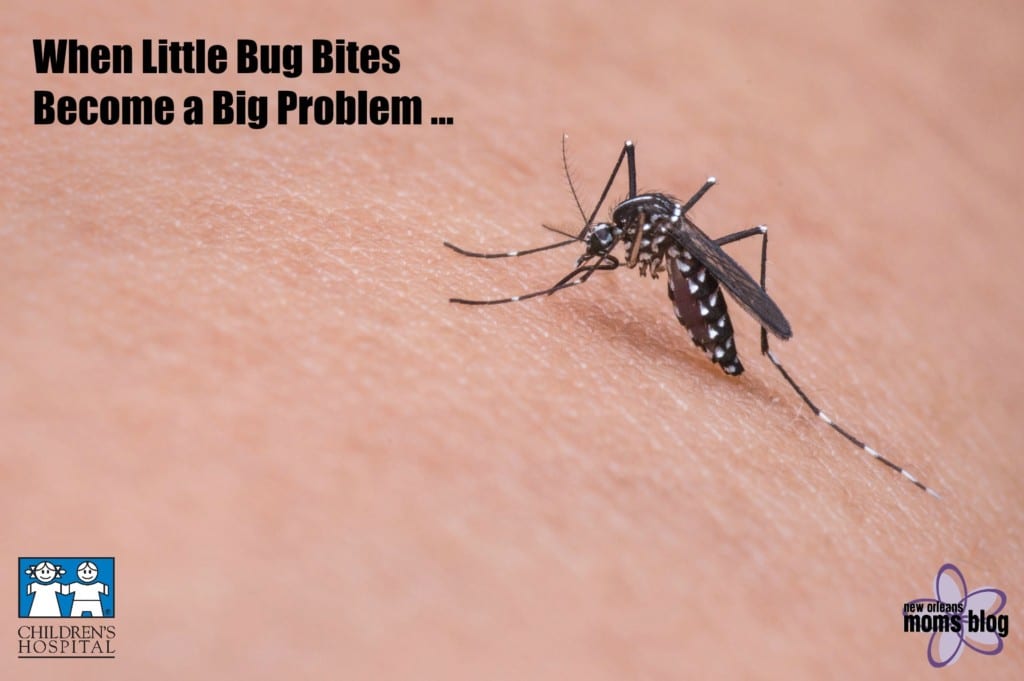
First, consider the location of the bite, the number of bites, the appearance of the bite.
- Mosquitoes: Mosquitoes will feed on humans multiple times and cover multiple areas on exposed skin, especially if your child is yummy tasting!
- Fleas: Fleas will present as intensely itching clusters at your ankle, because they jump and do not fly. They jump around until they tire-out (like happy toddlers in the midst of the terrible twos).
- Ants: Fire ant stings are immediately painful itchy area on hands or feet. These females inflict multiple venomous wounds (very protective mommies! We can’t blame them with their ‘Fiery’ personality).
What I commonly see
- Reaction within minutes or hours that can progress over 24 hours, lasting 2-7 days
- Itchy red bumps commonly less than an inch in size (painful at times)
- Fire ant stings that cause intense immediate pain and lots of swelling with blisters or pimples
- Mosquito bites can present as a large localized reaction up to 10 cm, red, itchy, warm, & swollen referred to as “Skeeter syndrome” especially in younger children
- Mosquitoes also attack when your child is asleep, commonly on their eyelid. Child wakes up with a very swollen itchy eyelid, otherwise happy and active.
Treatment that requires mommy care at home
- Immediately remove patient from danger
- Remove stinger carefully (don’t squeeze!)
- Clean the wound with soapy water
- Apply a cool compress to area
- Administer Analgesic (Ibuprofen as needed every 6-8 hours for pain)
- Administer oral antihistamine (like Benadryl or Zyrtec) for the itching
- Apply topical antihistamine (like Benadryl) can help immediately! and stops the itching
- Apply topical 1% hydrocortisone helps with the inflammatory reaction
- Apply topical antibiotics (over the counter Neosporin is always great to have around) recommended when there is skin breakdown due to scratching
Prevention!
A child covered with insect bites of varied stages is a tell-tale sign that he/she is out and about enjoying the beautiful outdoors … so don’t despair and don’t feel guilty (there is enough of that in trying to be the best parent). You can actually take steps to minimize the attack by our southern crawling and flying friends. So please don’t be afraid to have your child play outside and roll around the grass.
- Insect repellent– DEET (considered the GOLD standard) is useful against mosquitoes, fleas, midges, chiggers, ticks, and biting flies; that’s the good news. The bad news is that it’s not effective against stinging insects such as yellow jackets, wasps, bees, hornets, and fire ants. By the way, the word out on the street (or nest) is that these stinging insects have an issue with anger management and strong defense mechanism so avoid ruffling their wings/antennas.
- The percentage of DEET is how long it lasts not how potent it is
- The American Academy of Pediatrics (AAP) has approved 30% DEET for children over 2 months of age which provides 6 hours of protection; 10% only protects for 2 hours.
- Only apply on exposed areas; avoid eyes, mouth, and palms of hand (risk of rubbing eyes or thumb sucking!)
- DEET containing sunscreen not recommended because reapplication is needed for effective sunscreen to be protective
- Adverse reactions rare; avoid reapplication & excessive absorption by avoiding areas with skin breakdown or irritation.
- Time of day: At dusk and dawn, more mosquitoes are around (this also relates to sharks)
- Wear protective clothing & shoes
Be aware of your environment (fire ant piles, nests around door frames & trees, flower beds, stagnant water) – consider spraying your yard.
When should I call my pediatrician/healthcare provider?
Signs of infection (typically 3-4 days later) usually after excessive scratching or squeezing- increasing risk of infection
- increasing redness, or red streak
- increasing pain or limited movement
- yellow or green drainage from site
- fever (oral or rectal temperature >100.3)
When to Call 911
Refer to my story below – when should I have called 911? Do what I say not what I did!
This will happen within 15 minutes to an hour. Very acute, very sudden, very unexpected.
If child develops diffuse hives & facial swelling associated with or without:
- Respiratory distress (sudden wheezing or stridor, coughing and throat itching & itching ears, chest pain with increase work of breathing)
- Sudden belly pain, vomiting and diarrhea
- Weakness, lethargy, and/or confusion. Think Anaphylaxis!! Think Time!!
Sometimes doctors think like moms
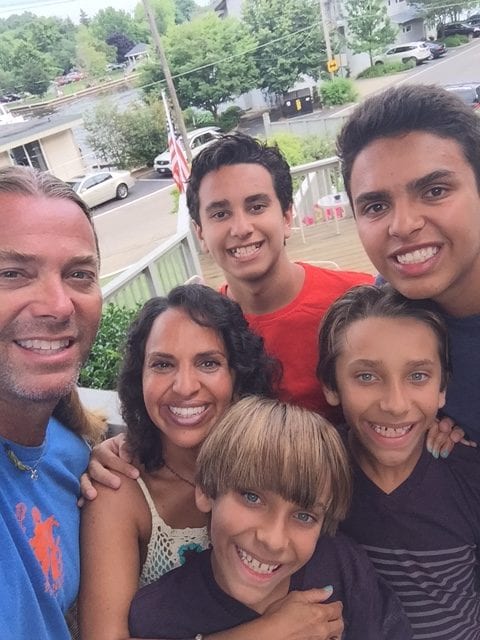 It was a beautiful Saturday morning with my 3-year-old twin boys and their 6-year-old brother at a local park when all of sudden Eli (one of the twins) was crying, complaining that his hand hurt. I quickly brush it off as a non-issue and told him he was fine. Less than 5 minutes later, we were walking back to the car and he anxiously started complaining of itching and grabbing his ears. I told him to calm down and it would be “OK” but it wasn’t “OK” as I strapped him in his car seat I lifted up his shirt and noticed he was covered with hives from head to toe. I figured Benadryl would do the trick for a minor allergic reaction to poison ivy or grass. By the time we got home, another 10 minutes, Eli was coughing, developed a runny nose and facial swelling. He was no longer crying or complaining of the itching, he was silent lying on the sofa except for a faint wheeze! A wave a panic came over me – could this be – could this really be… not the lecture I just gave my pediatric residents! NOT Anaphylaxis! He was listless, swollen and covered with hives. Time was of the essence. I can remember my lecture slides with statistics that 60% of patients die within 30-60 minutes, it was now 25 minutes!!!! Complete panic set in… Do I call 911? Do I call my husband who is downtown? Do I drive him myself to the hospital?? What should I do???
It was a beautiful Saturday morning with my 3-year-old twin boys and their 6-year-old brother at a local park when all of sudden Eli (one of the twins) was crying, complaining that his hand hurt. I quickly brush it off as a non-issue and told him he was fine. Less than 5 minutes later, we were walking back to the car and he anxiously started complaining of itching and grabbing his ears. I told him to calm down and it would be “OK” but it wasn’t “OK” as I strapped him in his car seat I lifted up his shirt and noticed he was covered with hives from head to toe. I figured Benadryl would do the trick for a minor allergic reaction to poison ivy or grass. By the time we got home, another 10 minutes, Eli was coughing, developed a runny nose and facial swelling. He was no longer crying or complaining of the itching, he was silent lying on the sofa except for a faint wheeze! A wave a panic came over me – could this be – could this really be… not the lecture I just gave my pediatric residents! NOT Anaphylaxis! He was listless, swollen and covered with hives. Time was of the essence. I can remember my lecture slides with statistics that 60% of patients die within 30-60 minutes, it was now 25 minutes!!!! Complete panic set in… Do I call 911? Do I call my husband who is downtown? Do I drive him myself to the hospital?? What should I do???
I was hysterical. How could his be happening? I had a moment of clarity! I need an Epi-Pen! I need to get an Epi-Pen now!
I sped down to the local Walgreen’s all the while Gabriel (his twin brother) saying “hurry mommy hurry Eli is my best friend” as I cried, praying my baby would not die. I ran into Walgreen’s with Eli in my arms and approached the Pharmacy counter and prescribed my son an Epi-Pen. As Gabriel continued to plead “hurry mommy hurry Eli’s my best friend” I was handed the Epi-Pen, but I had never used an Epi-Pen. Where was the needle? As an ER doctor I knew when to use it, what dose to give but not how to give it myself! The pharmacist handed me the instructions. Through my tears I could not make out the words! A voice inside me screamed, “GET A GRIP AND FOCUS!” So I read the instructions line by line and gave Eli the most important shot of his life!
Now I waited desperately, would it work? Was I too late? Within minutes Eli’s cough and runny nose completely stopped, his wheezing was over, and his hives disappeared! Eli’s first words,”I feel better.” Gabriel’s response, “Good job Eli”
I finally exhaled!
About Jerussa Aita-Levy, MD
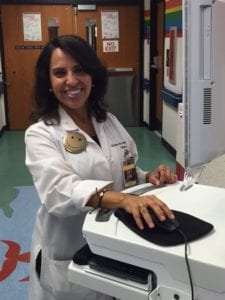 Dr. Levy is a Board Certified Pediatrician with a Masters in Public Health and has been an Assistant Professor of Clinical Pediatrics at LSUHSC School of Medicine, Department of Pediatrics-Emergency Medicine for the past 16 years. Dr. Levy has practiced as a physician in Children’s Hospital’s Emergency Department for the past ten years.
Dr. Levy is a Board Certified Pediatrician with a Masters in Public Health and has been an Assistant Professor of Clinical Pediatrics at LSUHSC School of Medicine, Department of Pediatrics-Emergency Medicine for the past 16 years. Dr. Levy has practiced as a physician in Children’s Hospital’s Emergency Department for the past ten years.



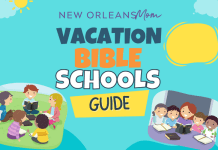










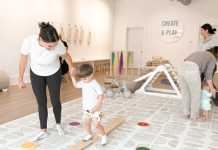


Thanks, Dr. Levy, for sharing great advice about insect bites & prevention & being so relatable!
Great and informative article!!
This article was very informative, thank you for Sharing your knowledge
Great new 100% all natural product that helps with insect bites and stings. Sting911 is a 100% natural, non-toxic, bite and sting relief product. It is sustainably formulated using the highest quality organic herbs. Sting911 is specifically designed to be extremely effective in stopping the itching and pain from all insect bites and stings. Available on Amazon